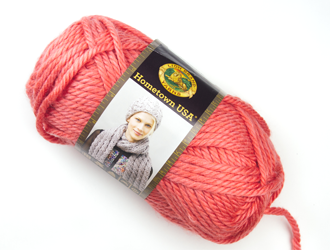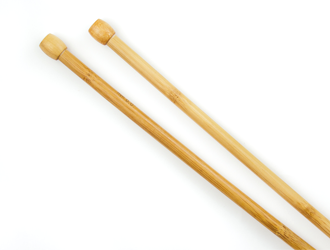This guide will show you everything you need to get started with knitting.
First, you’ll learn how to get yarn onto the needles. Then, you’ll learn how to make the all-important knit stitch. Lastly, we’ll go over how to get your knitting off the needles.
Sound good? Let’s dive in!
Knitting is as Simple as 1, 2, 3
Knitting boils down to three essential skills. These are the cast on, knit stitch, and the cast off. These three techniques make up the backbone of knitting. Master them and you’re officially a knitter. It’s that simple!
1.CAST ON
The adventure begins! Transform loose yarn into neat stitches.

2.KNIT STITCH
This simple stitch makes up the backbone of knitting.

3.CAST OFF
Get your knitting off the needles so you can wear it out and proud!

GATHER YOUR SUPPLIES
To knit, you’ll need needles and yarn. That’s it! But where to buy them? And what kind of needles and yarn? Thick or thin? Wood or plastic? The options are endless!
YARN: I always recommend a chunky yarn and correspondingly thick needles for beginners because they’re much easier to grip.
In these tutorials I’m using Lion Brand’s Hometown (in color Fort Lauderdale Coral) and 9mm needles.
You don’t need to use the same yarn as me, but try to get yarn that’s at least a medium weight (aka. worsted weight) or thicker. Thinner yarns are harder to control. Not sure what “yarn weight” is? Check out this brief guide to yarn weights.
TIP: If you’re buying yarn and needles, choose cheap acrylic yarn so that mistakes won’t feel like such a big deal. As a beginner, you’ll make mistakes – and that’s totally normal!
Mistakes are part of the journey, and they’ll hurt less if you’re using inexpensive yarn as opposed to pricey artisan yarn.
NEEDLES: I recommend wood or bamboo needles for beginners. Wood and bamboo have a natural surface drag that “grips” the yarn and…
This guide was sourced from SheepAndStitch.com.


